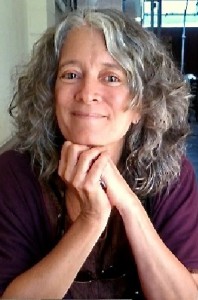We naturopathic physicians have a Latin saying: “Tolle causam.”
It means “Treat the cause.”

In other words, don’t be satisfied with just making the symptoms go away. Find the underlying cause, if your goal is to help your patient be rid of the complaint.
Find the cause. This is nowhere more appropriate than in the treatment of pain.
Pain is a symptom, and, like any symptom it signals an underlying cause. The cause may be physical, mental, emotional, or spiritual.
If your goal is to alleviate the symptom, by all means give the patient a pain killer. Trouble is, the symptom may be alleviated, but it will recur.
I had an opportunity, not long ago, to interface with conventional medical methods, when I suffered severe shoulder pain.
My primary care doctor offered what’s called a differential diagnosis: “Well, it could be a torn rotator cuff, or it could be frozen shoulder.”)
She suggested I try physical therapy. She said, “X-ray would be non-contributory.”
Two months and six PT sessions, and as many acupuncture sessions later, there was no improvement.
I suggested she order an MRI. When she declined, I took matters into my own hands. I asked a doctor friend to order imaging for me.
A week later, MRI in hand, the orthopedic surgeon offered his comments. “I bet they sent you for PT, didn’t they? And I bet it didn’t work, did it? That’s because PT would never help in this particular situation. You have jagged edges on the acromio-clavicular joint that are creating inflammation and causing your discomfort.”
He said, “I could give you a cortisone shot in the joint, and that would take care of the pain. But your pain would simply recur, because we wouldn’t be taking care of the cause.” He said that surgery would correct the situation.
Indeed, the surgery corrected the situation, but four weeks later I once again experienced burning pain shooting through my shoulder and down into my hand.
The orthopedic surgeon re-evaluated the situation and determined that the pain was caused by inflammation in a weakened area that had been further inflamed by the surgery. The inflammation had caused a frozen shoulder which, he said, would be significantly better in 72 hours if I accepted a cortisone shot. I did, and it did.
But that isn’t the end of the story. I was curious to find out what created the inflammation that was worsened by the surgery?
The outcome, so far, was all good. I was grateful for the reduced pain, which allowed me to receive treatment from Elijah in our office. Elijah manipulated the bones in the shoulder and the clavicle ribs and cervical vertebrae to create space and flexibility in the shoulder joint and correct any misalignments that might be contributing to the cause.
The saga continues. I remain curious – what caused the misalignments? Was it poor ergonomics at my computer desk? Years of carrying a bag over my left shoulder? Hiking my shoulder to hold a phone to my ear? Was there an emotional cause? (Did I “have a chip on my shoulder”?)
I continue to explore.
The point I want to make is this: unless we can trace your pain to its precipitating cause and address the cause, any relief might be temporary. We may be able to diminish or suppress your pain, or make it go away temporarily, but the real work will remain to be done.
I think the best take-away lesson from my shoulder injury is that it’s generally worthwhile to invest some time and effort to determine the underlying cause. Failing this, you might just end up with a temporary patch.
* * *
Read more about the medical services Dr. Connie offers here: http://www.naturopathichealthconsultations.com
